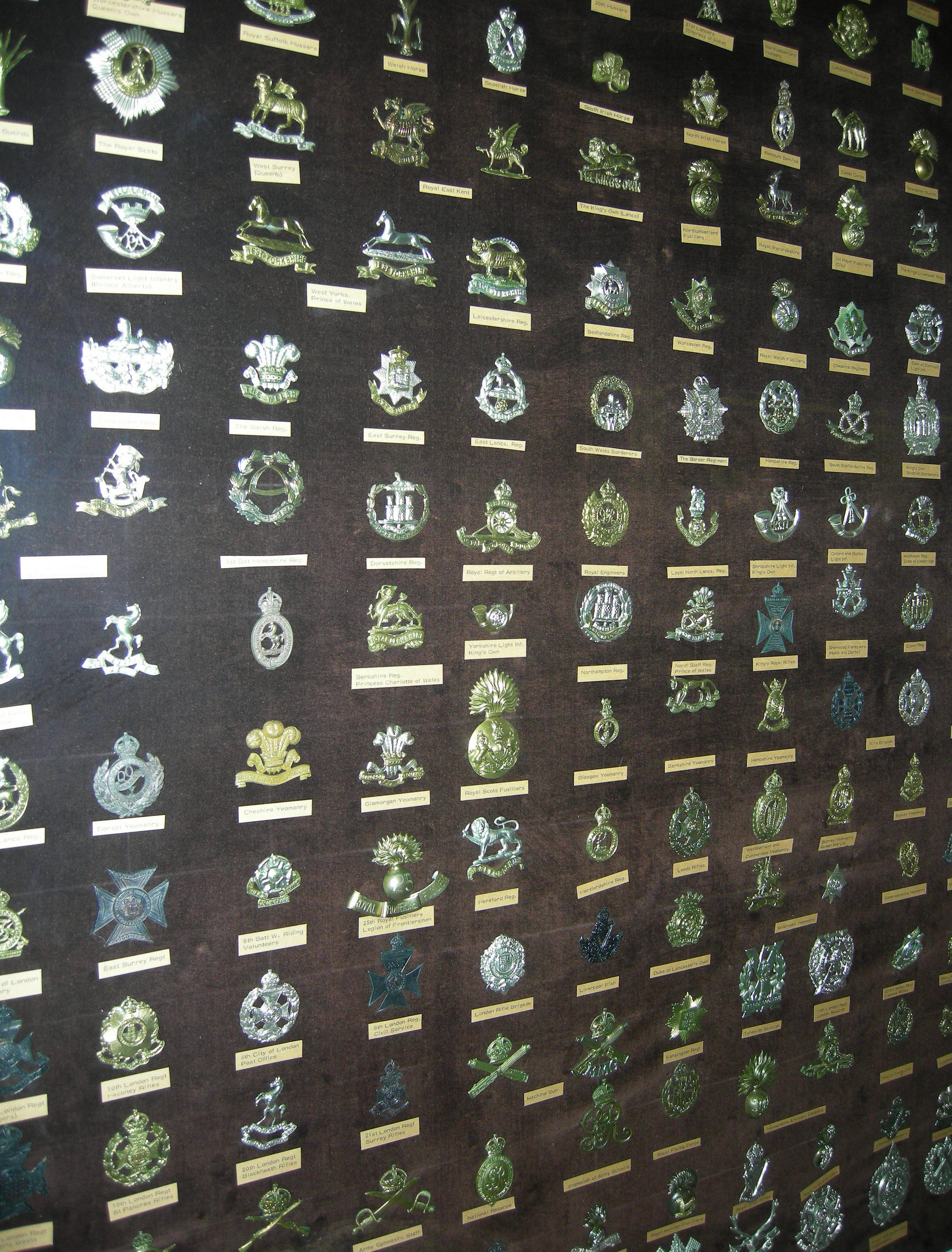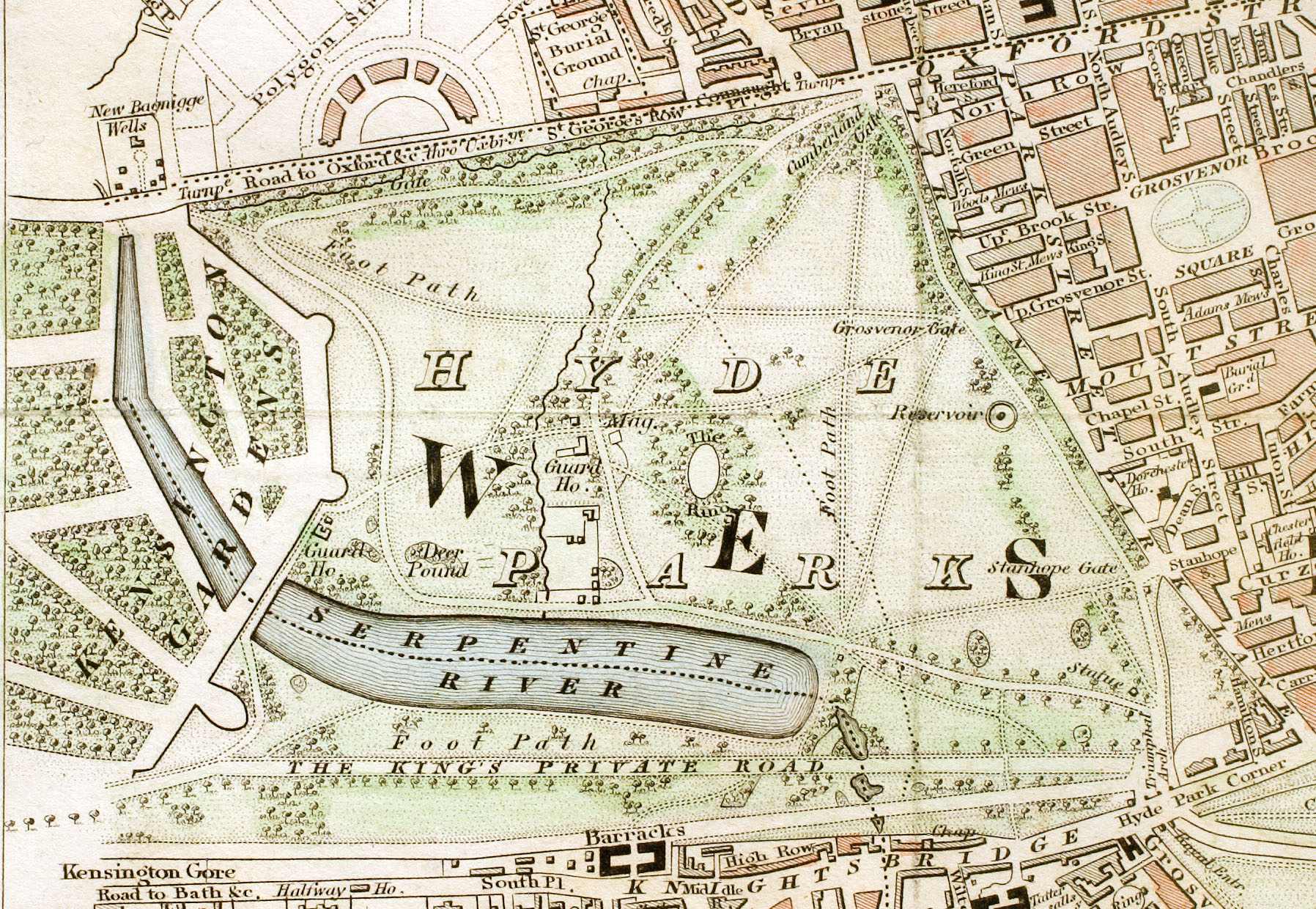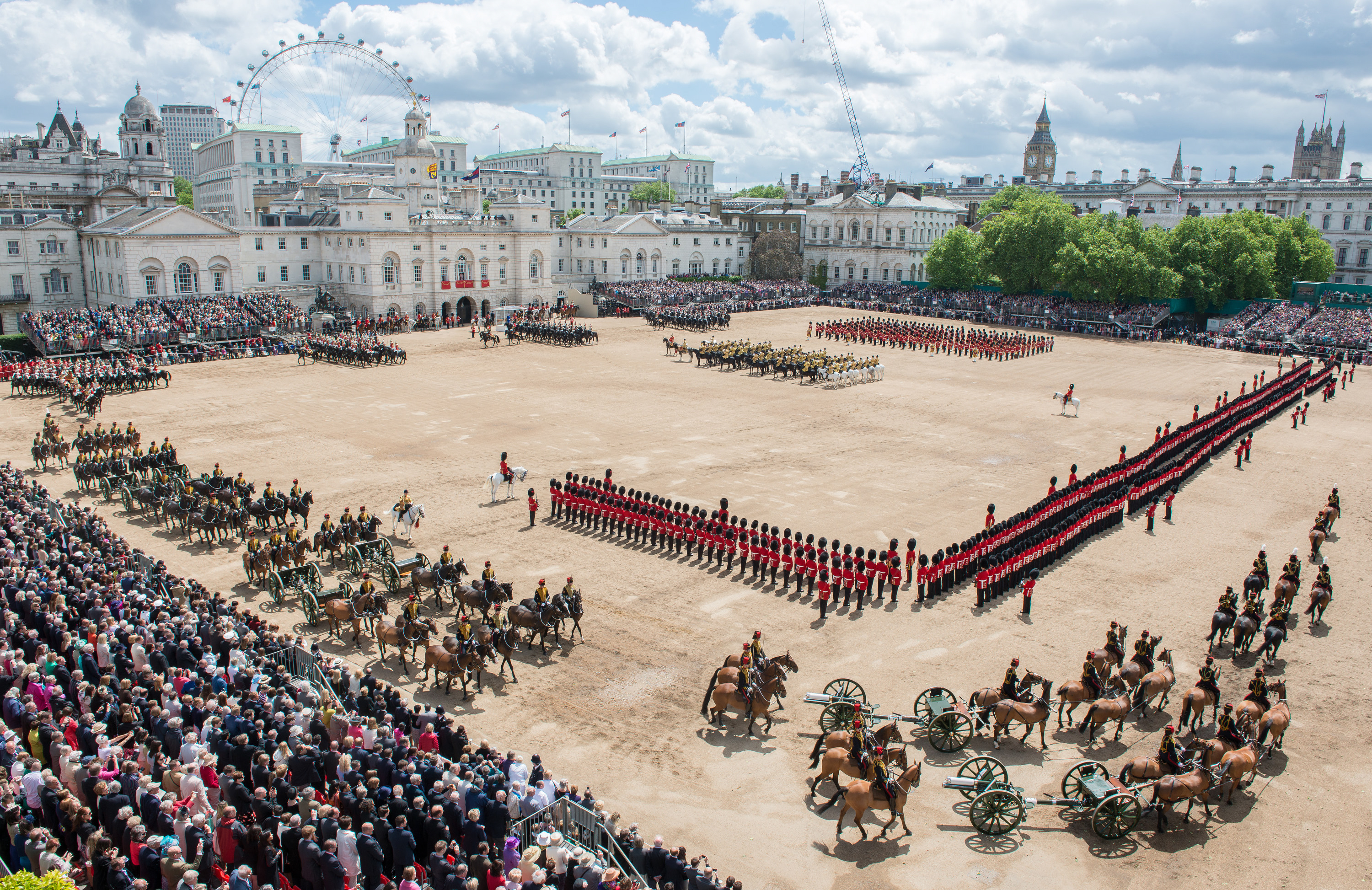|
Guards Machine Gun Regiment
The Guards Machine Gun Regiment was a regiment of the British Army, formed for service in the First World War. When the Guards Division was formed in August 1915, it included three machine gun companies, with a fourth added in March 1917. In April 1917, the four companies were grouped together as a single battalion named the Machine Gun Guards, before being re-designated by Royal Warrant in May 1918 as the Guards Machine Gun Regiment. In June, the regiment was reorganised into battalions. Battalions The battalions of the regiment were: *1st (Life Guards) Battalion – conversion of 1st Life Guards *2nd (Life Guards) Battalion – conversion of 2nd Life Guards *3rd (Royal Horse Guards) Battalion – conversion of Royal Horse Guards ("The Blues") *4th (Foot Guards) Battalion – re-designation of the existing Machine Gun Guards battalion *5th (Reserve) Battalion – re-designation of Guards Machine Gun Training Centre The first three battalions served with the 1st Army of the ... [...More Info...] [...Related Items...] OR: [Wikipedia] [Google] [Baidu] |
Cap Badge
A cap badge, also known as head badge or hat badge, is a badge worn on uniform headgear and distinguishes the wearer's nationality and/or organisation. The wearing of cap badges is a convention commonly found among military and police forces, as well as uniformed civilian groups such as the Scouting, Boy Scouts, civil defence organisations, ambulance services (e.g. the St. John Ambulance Brigade), customs services, fire services etc. Cap badges are a modern form of Heraldic badge, heraldry and their design generally incorporates highly symbolic devices. Some badges that contain images of lions or other cats are sometimes informally referred to as cat badges. Instances in military forces British armed forces The British Armed Forces utilise a variety of metal and cloth cap badges on their headdress, generally on caps and berets. They are also worn on Uniforms_of_the_British_Armed_Forces#Turbans, Sikh turbans. British Army In the British Army (as well as other Commonwealth o ... [...More Info...] [...Related Items...] OR: [Wikipedia] [Google] [Baidu] |
British First Army
The First Army was a formation of the British Army that existed during the First and Second World Wars. The First Army included Indian and Portuguese forces during the First World War and American and French units during the Second World War. First World War The First Army was part of the British Army during the First World War and was formed on 26 December 1914 when the corps of the British Expeditionary Force were divided into the First Army under Lieutenant-General Sir Douglas Haig and the Second Army under Horace Smith-Dorrien. First Army had the Ist, IVth and the Indian Corps under command. It made advances of 1,200 yards at the beginning of the Battle of Neuve Chapelle in March 1915 before the momentum died out. The First Army suffered reverses at Vimy Ridge in May 1916 and at Fromelles the following month. From 1917, the First Army also included the Portuguese Expeditionary Corps. The First Army took part in the 1918 offensive that drove the Germans back and v ... [...More Info...] [...Related Items...] OR: [Wikipedia] [Google] [Baidu] |
Infantry Regiments Of The British Army
Infantry, or infantryman are a type of soldier who specialize in ground combat, typically fighting dismounted. Historically the term was used to describe foot soldiers, i.e. those who march and fight on foot. In modern usage, the term broadly encompasses a wide variety of subspecialties, including light infantry, irregular infantry, heavy infantry, mountain infantry, motorized infantry, mechanized infantry, airborne infantry, air assault infantry, and naval infantry. Other subtypes of infantry, such as line infantry and mounted infantry, were once commonplace but fell out of favor in the 1800s with the invention of more accurate and powerful weapons. Etymology and terminology In English, use of the term ''infantry'' began about the 1570s, describing soldiers who march and fight on foot. The word derives from Middle French , from older Italian (also Spanish) ''infanteria'' (foot soldiers too inexperienced for cavalry), from Latin '' īnfāns'' (without speech, newbor ... [...More Info...] [...Related Items...] OR: [Wikipedia] [Google] [Baidu] |
Regiments Of The British Army In World War I
A regiment is a military unit. Its role and size varies markedly, depending on the country, service, or specialisation. In Medieval Europe, the term "regiment" denoted any large body of front-line soldiers, recruited or conscripted in one geographical area, by a leader who was often also the feudal lord ''in capite'' of the soldiers. Lesser barons of knightly rank could be expected to muster or hire a company or battalion from their manorial estate. By the end of the 17th century, infantry regiments in most European armies were permanent units, with approximately 800 men and commanded by a colonel. Definitions During the modern era, the word "regiment" – much like "corps" – may have two somewhat divergent meanings, which refer to two distinct roles: # a front-line military formation; or # an administrative or ceremonial unit. In many armies, the first role has been assumed by independent battalions, battlegroups, task forces, brigades and other, similarly sized oper ... [...More Info...] [...Related Items...] OR: [Wikipedia] [Google] [Baidu] |
Former Guards Regiments
A former is an object, such as a template, gauge or cutting die, which is used to form something such as a boat's hull. Typically, a former gives shape to a structure that may have complex curvature. A former may become an integral part of the finished structure, as in an aircraft fuselage, or it may be removable, being used in the construction process and then discarded or re-used. Aircraft formers Formers are used in the construction of aircraft fuselage, of which a typical fuselage has a series from the nose cone to the empennage, typically perpendicular to the longitudinal axis of the aircraft. The primary purpose of formers is to establish the shape of the fuselage and reduce the column length of stringers to prevent instability. Formers are typically attached to longerons, which support the skin of the aircraft. The "former-and-longeron" technique (also called stations and stringers) was adopted from boat construction, and was typical of light aircraft built unt ... [...More Info...] [...Related Items...] OR: [Wikipedia] [Google] [Baidu] |
Military Units And Formations Established In 1915
A military, also known collectively as armed forces, is a heavily armed, highly organized force primarily intended for warfare. Militaries are typically authorized and maintained by a sovereign state, with their members identifiable by a distinct military uniform. They may consist of one or more military branches such as an army, navy, air force, space force, marines, or coast guard. The main task of a military is usually defined as defence of their state and its interests against external armed threats. In broad usage, the terms "armed forces" and "military" are often synonymous, although in technical usage a distinction is sometimes made in which a country's armed forces may include other paramilitary forces such as armed police. Beyond warfare, the military may be employed in additional sanctioned and non-sanctioned functions within the state, including internal security threats, crowd control, promotion of political agendas, emergency services and reconstruction, pro ... [...More Info...] [...Related Items...] OR: [Wikipedia] [Google] [Baidu] |
Machine Gun Corps
The Machine Gun Corps (MGC) was a Regiment, corps of the British Army, formed in October 1915 in response to the need for more effective use of machine guns on the Western Front (World War I), Western Front in the World War I, First World War. The Heavy Branch of the MGC was the first to use tanks in combat and was subsequently turned into the Tank Corps, later called the Royal Tank Regiment. The MGC remained in existence after the war until it was disbanded in 1922. Formation At the outbreak of the World War I, First World War in August 1914, the tactical potential of machine guns was not appreciated by the British Armed Forces. The prevalent attitude of senior ranks at the outbreak of the Great War can be summed up by the opinion of an officer expressed a decade earlier that a single battery of machine guns per army corps was a sufficient level of issue. Despite the evidence of fighting in Manchuria (1905 onwards) the army went to war with each infantry battalion and cavalry ... [...More Info...] [...Related Items...] OR: [Wikipedia] [Google] [Baidu] |
United Kingdom
The United Kingdom of Great Britain and Northern Ireland, commonly known as the United Kingdom (UK) or Britain, is a country in Northwestern Europe, off the coast of European mainland, the continental mainland. It comprises England, Scotland, Wales and Northern Ireland. The UK includes the island of Great Britain, the north-eastern part of the island of Ireland, and most of List of islands of the United Kingdom, the smaller islands within the British Isles, covering . Northern Ireland shares Republic of Ireland–United Kingdom border, a land border with the Republic of Ireland; otherwise, the UK is surrounded by the Atlantic Ocean, the North Sea, the English Channel, the Celtic Sea and the Irish Sea. It maintains sovereignty over the British Overseas Territories, which are located across various oceans and seas globally. The UK had an estimated population of over 68.2 million people in 2023. The capital and largest city of both England and the UK is London. The cities o ... [...More Info...] [...Related Items...] OR: [Wikipedia] [Google] [Baidu] |
Wakefield
Wakefield is a cathedral city in West Yorkshire, England located on the River Calder. The city had a population of 109,766 in the 2021 census, up from 99,251 in the 2011 census. The city is the administrative centre of the wider Metropolitan Borough of Wakefield, which had a population of , the most populous district in England. It is part of the West Yorkshire Built-up Area and the Yorkshire and the Humber region. In 1888, it gained city status due to its cathedral. The city has a town hall and is home to the county hall, which was the former administrative centre of the city's county borough and metropolitan borough as well as county town for the West Riding of Yorkshire. The Battle of Wakefield took place in the Wars of the Roses, and the city was a Royalist stronghold in the Civil War. Wakefield became an important market town and centre for wool, exploiting its position on the navigable River Calder to become an inland port. In the 18th century, Wakefie ... [...More Info...] [...Related Items...] OR: [Wikipedia] [Google] [Baidu] |
Queen's Official Birthday
The King's Official Birthday or Queen's Official Birthday is the selected day in most Commonwealth realms on which the birthday of the monarch is officially celebrated in those countries. It does not necessarily correspond to the date of the monarch's actual birth. The sovereign's birthday was first officially marked in the Kingdom of Great Britain in 1748, for King George II. Since then, the date of the king or queen's birthday has been determined throughout the British Empire and, later, the Commonwealth of Nations, either by royal proclamations issued by the sovereign or viceroy, or by statute laws passed by the local parliament. The date of the celebration today varies as adopted by each country and is generally set around the end of May or start of June, to coincide with a higher probability of fine weather in the Northern Hemisphere for outdoor ceremonies. In most cases, it is an official public holiday, sometimes aligning with the celebration of other events. Most Comm ... [...More Info...] [...Related Items...] OR: [Wikipedia] [Google] [Baidu] |
Hyde Park, London
Hyde Park is a , historic Listed building#Heritage protection, Grade I-listed urban park in Westminster, Greater London. A Royal Parks of London, Royal Park, it is the largest of the parks and green spaces that form a chain from Kensington Palace through Kensington Gardens and Hyde Park, via Hyde Park Corner and Green Park, past Buckingham Palace to St James's Park. Hyde Park is divided by the Serpentine and the Long Water lakes. The park was established by Henry VIII in 1536 when he took the land from Westminster Abbey and used it as a hunting ground. It opened to the public in 1637 and quickly became popular, particularly for May Day parades. Major improvements occurred in the early 18th century under the direction of Caroline of Ansbach, Queen Caroline. The park also became a place for duels during this time, often involving members of the nobility. In the 19th century, the Great Exhibition of 1851 was held in the park, for which The Crystal Palace, designed by Joseph Paxt ... [...More Info...] [...Related Items...] OR: [Wikipedia] [Google] [Baidu] |
Trooping The Colour
Trooping the Colour is a ceremonial event performed every year on Horse Guards Parade in London, United Kingdom, by regiments of Household Division, to celebrate the King's Official Birthday, official birthday of the British sovereign, though the event is not necessarily held on that day. It is also known as the Sovereign's Birthday Parade. Similar events are held in other countries of the Commonwealth. In the UK, it is, with the State Opening of Parliament, the biggest event of the ceremonial calendar, and watched by millions on TV and on the streets of London. Historically, Colours, standards and guidons, colours were once used on the battlefield as a rallying point. They display the battle honours of a regiment and are a focal point of Trooping the Colour. The ceremony has marked the sovereign's official birthday since 1748. Each year, one of the five Foot guards#United Kingdom, Foot Guards regiments of the Household Division is selected to slowly troop (carry) its colour thr ... [...More Info...] [...Related Items...] OR: [Wikipedia] [Google] [Baidu] |







